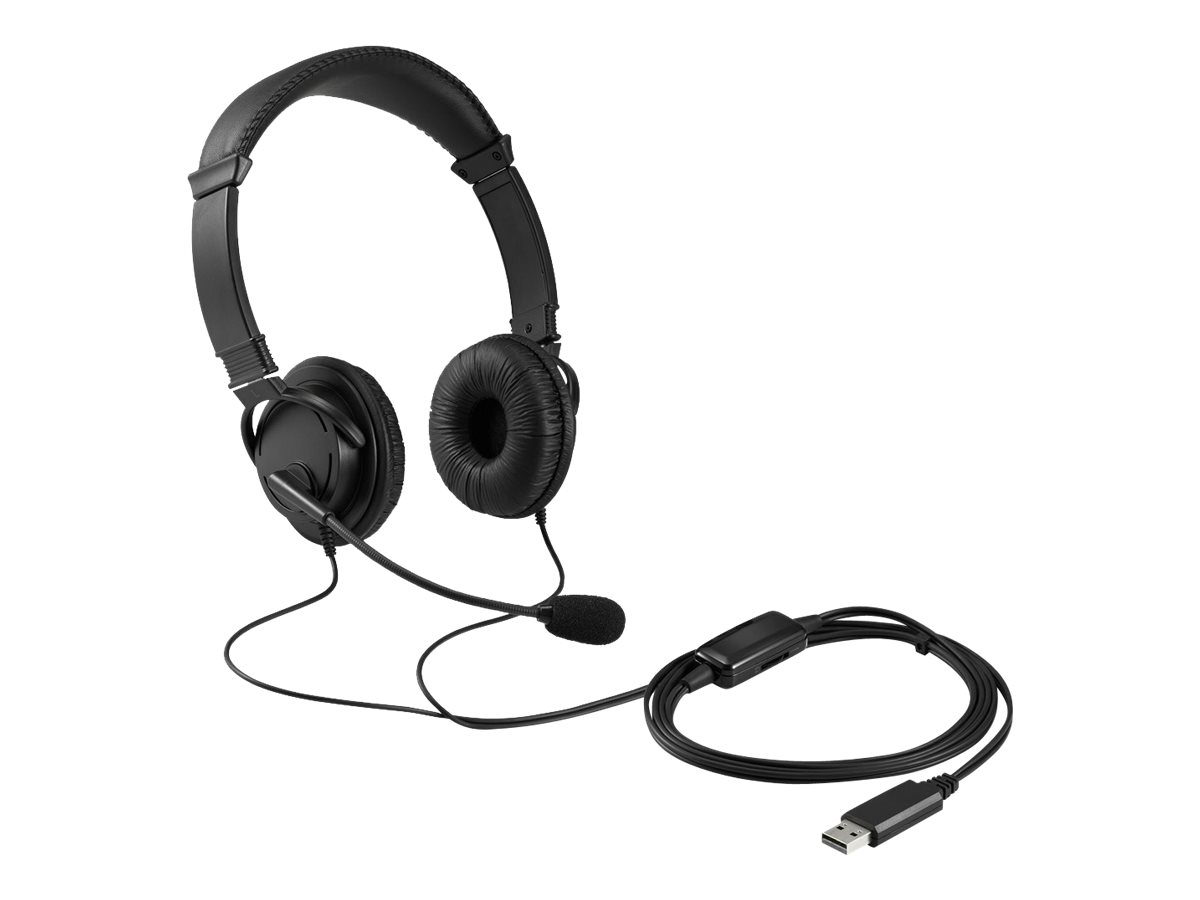
A detailed list of technical data, specifications, ratings and expert review of Kensington USB Hi-Fi Headphones. Get a comprehensive look at your chosen headphones and see if these are the ones that will best suit your needs. You can also use the comparison feature to compare with other competing headphones.
design and dimensions sound quality microphone remote control cable connections others
| DESIGN AND DIMENSIONS Kensington USB Hi-Fi Headphones |
|---|
| Product Type | Headphones - wired - USB | |
|---|---|---|
| Earpad Material | Leatherette, foam |
The Kensington USB Hi-Fi Headphones are wired headphones. In the case of studio and professional DJ headphones, a wired connection is a standard and a necessity. In this case, connecting via cable reduces audio transmission delays and prevents unwanted battery drain as it would be in case of wireless headphones. The same is de facto true for gaming headsets. In case of headphones for normal music listening, the cable is rather a relic, although it still has its fans. However, the wireless option is much more popular for everyday use in today’s world.
The headphones are designed as on-ear. On-ear headphones are generally lighter. However, their design has fewer isolation capabilities, and therefore, for example, more sound can be let in and out compared to around-ear headphones.
| SOUND QUALITY Kensington USB Hi-Fi Headphones |
|---|
| Headphones Form Factor | On-ear | |
|---|---|---|
| Adjustable Headband | Yes | |
| Connectivity Technology | Wired | |
| Sound Output Mode | Stereo | |
| Sensitivity | 94 dB | Worse than 88 % of headphones rated. |
| Diaphragm | 40 mm | Better than 75 % of headphones rated. |
| In-Cord Volume Control | Yes |
The sound quality can be affected by many factors. The headphone's sensitivity determines how effectively they can receive a signal from a source. The higher the sensitivity of the headphones, the louder they can play at lower power consumption. However, at high volumes, power consumption increases, which can be a problem when listening to music from a cell phone. A sensitivity value of around 85 dB is suitable for quiet environments, while a value of around 90 dB allows for quality listening even in noisy environments. Headphones with a sensitivity value of 100 dB and above are suitable for extremely noisy environments such as concerts. Headphones Kensington USB Hi-Fi Headphones are designed with sensitivity about 94 dB. To control the optimum playback volume you can use the manual control directly on the cable.
Headphones consist of many important parts, including the diaphragm, which is responsible for converting electrical signals into sound. The diaphragm, with a thickness of around 6 mm, is very sensitive to changes in high frequencies but less sensitive to bass. For a relatively balanced sound profile, a medium-thick diaphragm of around 10 mm is used, which can reproduce both bass and treble. A diaphragm with a thickness of around 20 mm is not as quick to respond to changes in the audio signal, and this results in poorer bass listening. However, it is very sensitive to higher frequencies. In the case of this model, the diaphragm is the 40 mm.
| MICROPHONE Kensington USB Hi-Fi Headphones |
|---|
| Type | Boom | |
|---|---|---|
| Noise Cancelling | Yes | Better than 94 % of headphones rated. |
Kensington USB Hi-Fi Headphones has a boom–type microphone. A nice benefit of the microphone of the Headphones Kensington USB Hi-Fi Headphones is the Noise Canceling technology that suppresses ambient noise and allows a clearer sound recording to be captured.
Show more| REMOTE CONTROL Kensington USB Hi-Fi Headphones |
|---|
| Controls | Mute, volume |
|---|
| CABLE Kensington USB Hi-Fi Headphones |
|---|
| Cable Type | Headphones cable - 1.83 m |
|---|
| CONNECTIONS Kensington USB Hi-Fi Headphones |
|---|
| Connector Type | Headphones (4 PIN USB Type A) |
|---|
| OTHERS Kensington USB Hi-Fi Headphones |
|---|
| Compatibility | Chrome OS, Mac, Windows | |
|---|---|---|
| Service & Support | Limited warranty - 1 year |
Similar Headphones
Other Kensington Headphones